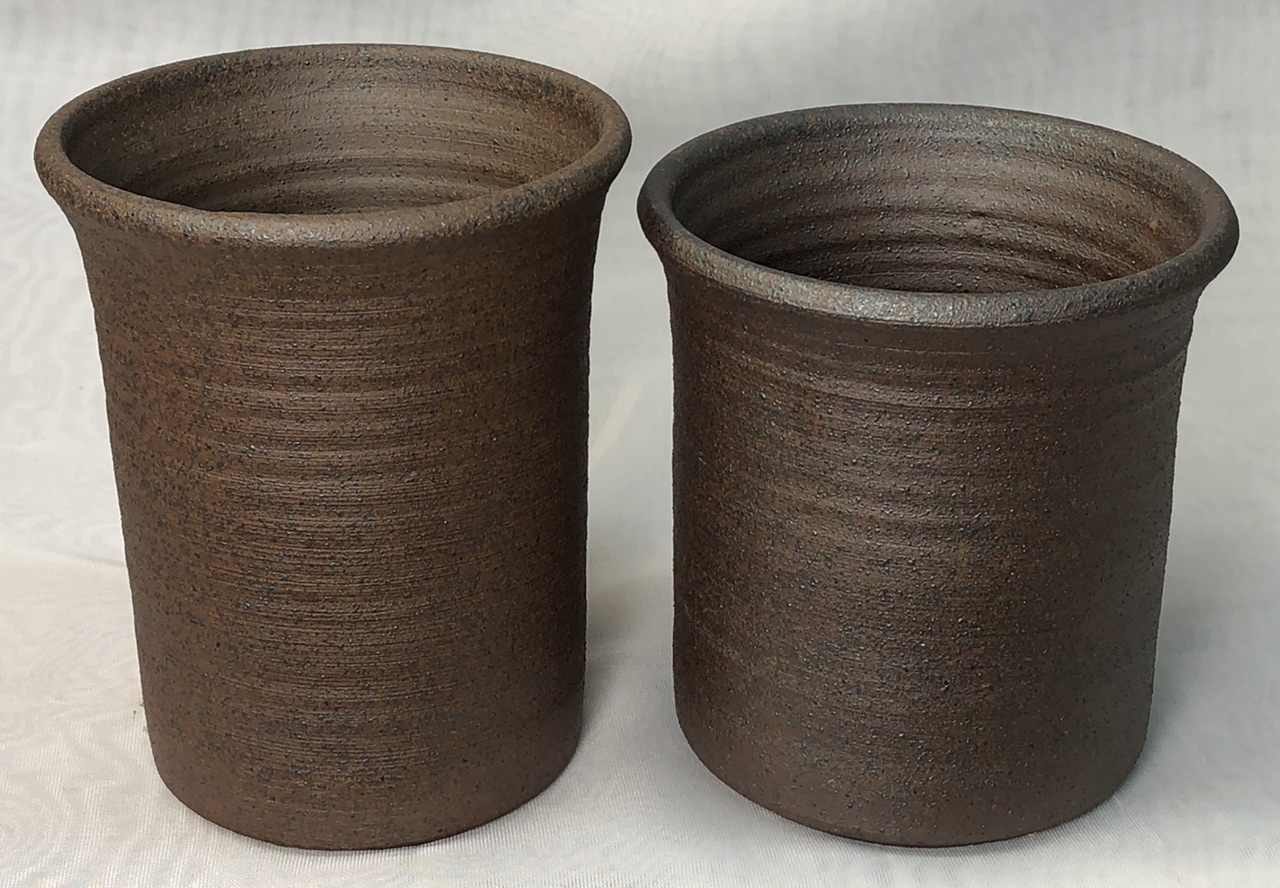| Monthly Tech-Tip | No tracking! No ads! |
Amazing iron-blossoms in a vitreous reduction stoneware body
Fire-Red is an unusual material for several reasons. It has a high iron content yet is a fireclay. It is also non-plastic. Most important, it is not ground to 200 mesh like industrial materials. These bodies demonstrate it well, left: 42.5% Fire-Red, 42.5% ball clay and 15% Custer feldspar, right: 60% Fire-Red, 30% ball clay and 10% feldspar. The ball clay adds plasticity. The feldspar gives control of the degree of vitrification (the left one has 1.3% porosity at cone 10R, the right one 1.5%). This recipe vitrifies so it does not exhibit the deep red color that Fire-Red would give if there was no feldspar. Look closely at the surface: It is covered by thousands of tiny iron-eruptions, they occurred as the iron pyrite particles liquify as FeO (because of the reduction atmosphere in the firing), and these produce a metallic appearance. And, they will bleed through an over-glaze, if present, to give stunning speckled surfaces.
Related Pictures
Iron red reduction clay suitable for functional ware? How?

This picture has its own page with more detail, click here to see it.
This is a high iron two-material stoneware fired in reduction, purely a test body we are working on. Normally such bodies are rendered unsuitable because of black coring associated with FeO. But 10% added Custer Feldspar solves that problem, combining with the iron to vitrify the body to excellent fired strength (it does have 5% porosity but this is mainly due to the cavities formerly occupied by the iron pyrite particles. The color and iron speckle are contributed by both of the raw materials in the body. Saint Rose Red supplies most of the iron to produce the red coloration. A1 bentonitic clay adds plasticity and contributes the pyritic iron particles. The fired bars of this body show it at cone 10 reduction (top) and cone 10 oxidation down to 7 (downward from top). Adding just a little more feldspar produces a metallic firing surface! The glaze is GR10-CW, pure Ravenscrag Slip with 10% talc opacified with a little Zircopax and tin oxide.
Blue brick is made by reduction-firing high-iron clays to near vitrification

This picture has its own page with more detail, click here to see it.
A google search for "Staffordshire blue brick" will turn up lots of images and web pages on the topic. Although not really appearing blue on closeup, at a distance the effect is more clear. The clay must have enough iron to both stain it and act as a flux in the reduction kiln atmosphere. The degree of atmospheric consistency inside the kiln will determine the range of colors produced. A potter can achieve this effect by firing a red earthenware in reduction (e.g. to cone 2R), firing a middle-temperature red burning body to cone 6R or adding feldspar to a high temperature reduction red. Additions of iron oxide will enhance the effect, however, thorough testing is needed to achieve the difficult balance of enough iron to get the color but not so much it will over-vitrify and bloat or melt.
Videos
Links
| URLs |
https://plainsmanclays.com/data/index.php?product=12906
Fire-Red Data Sheet |
| Materials |
Fire-Red
|
| Glossary |
Reduction Speckle
A sought-after visual effect that occurs in reduction fired stoneware. Particles of iron pyrite that occur naturally in the clay melt and blossom up through the glaze |
Got a Question?
Buy me a coffee and we can talk

https://backup.digitalfire.com, All Rights Reserved
Privacy Policy

